I got a wedding invitation last month with dress code listed as “lounge suit” and watched my American colleague nearly have an existential crisis. “What the hell is a lounge suit?” he demanded, clearly imagining some kind of velvet smoking jacket situation. “Is it like… formal pajamas?” I laughed for about three minutes before realizing he was genuinely confused, not just winding me up. That’s when it hit me that our British wedding dress codes are completely nonsensical to anyone who hasn’t spent a lifetime decoding them through trial, error, and occasional humiliation.
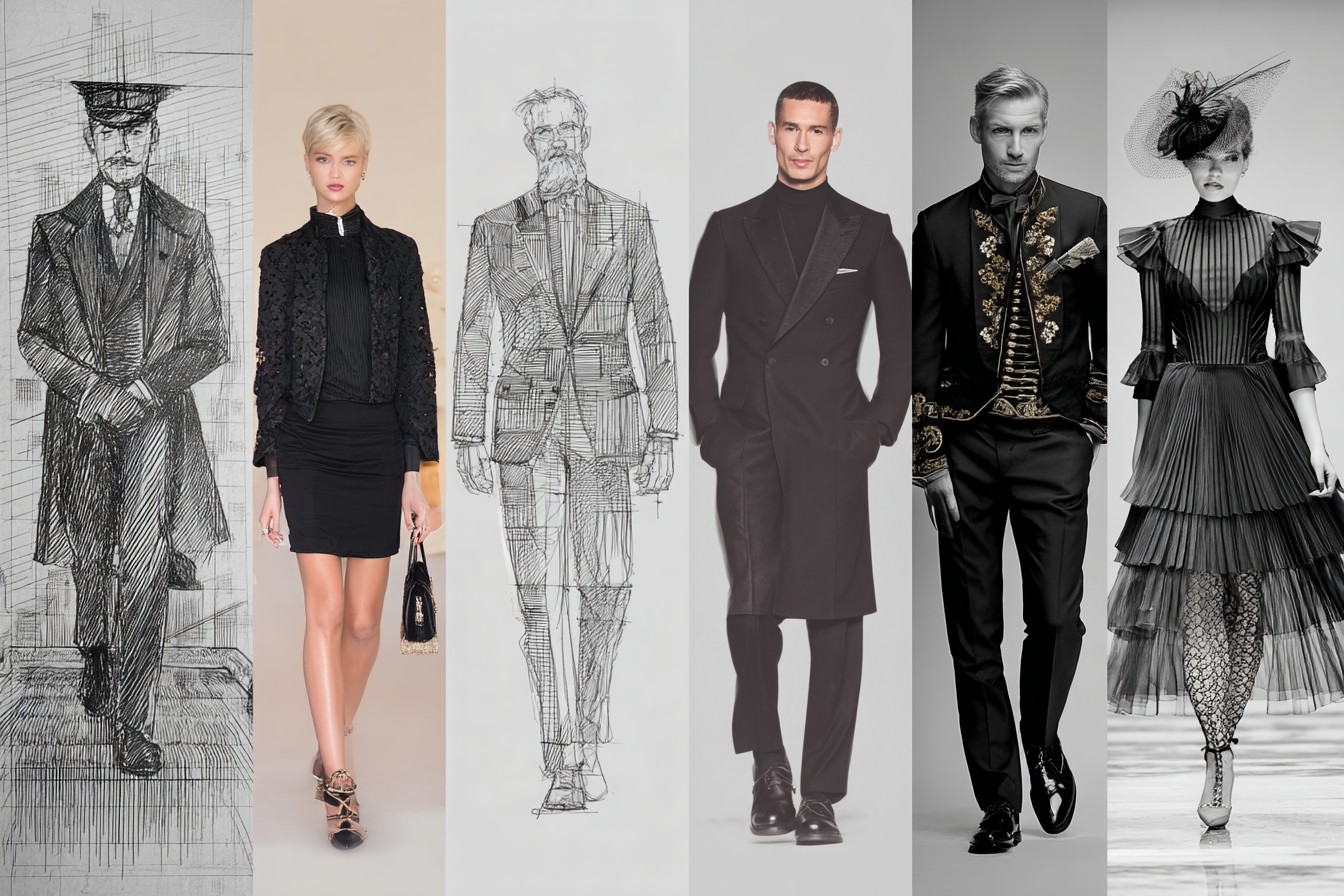
The thing about British wedding dress codes is they’re deliberately vague while somehow also being incredibly specific. They’re like cryptic crossword clues written by your passive-aggressive aunt—technically comprehensible but designed to make you feel slightly inadequate. And “lounge suit” might be the worst offender of them all.
Here’s a confession: I turned up to my first “lounge suit” wedding in an actual suit I’d wear to lounge in—a slightly rumpled linen number that I thought struck the perfect balance between smart and relaxed. The groom’s mother actually gasped when she saw me, which is never the reaction you want when you’re not the bride. Turns out “lounge suit” means practically the opposite of what it sounds like. English, eh? Marvelous language.
So let me save you from my fate. “Lounge suit” is essentially traditional British code for a proper suit—the kind you definitely wouldn’t lounge in unless you enjoy creasing expensive wool. It sits in that frustrating middle ground of formality: not as formal as black or white tie, but definitely not as casual as “smart casual” (another nightmare dress code for another day). It’s the default setting for most British weddings, the sartorial equivalent of saying “we care about how this looks but we’re not aristocrats, calm down.”

The suit itself should be fairly classic. Navy is the eternal failsafe—I’ve got a midnight navy two-piece from Suitsupply that’s attended more weddings than some of my actual friends. Dark grey works too, and in summer you can venture into lighter territory with mid-blues or even light grey if you’re feeling adventurous. Black, despite what every high street retailer will try to tell you, is generally too somber and evening-focused for daytime wedding festivities. Save it for funerals and casino cosplay.
Cut-wise, you want something fitted but not spray-on. British tailoring traditionally favors a slightly more structured shoulder and a gently nipped waist compared to the softer Italian approach or the boxy American sack suit. Two buttons is standard, though three can work if you’re tall. Notch lapels are the safe option, but a peak lapel adds a touch of flair without veering into fancy dress territory.
The real distinguishing factor is in the details and accessories. This is where “lounge suit” subtly differs from your standard work suit (which, let’s face it, fewer and fewer of us are wearing these days anyway). It’s the flourishes that signal “I understand this is a celebration, not a quarterly budget meeting.”
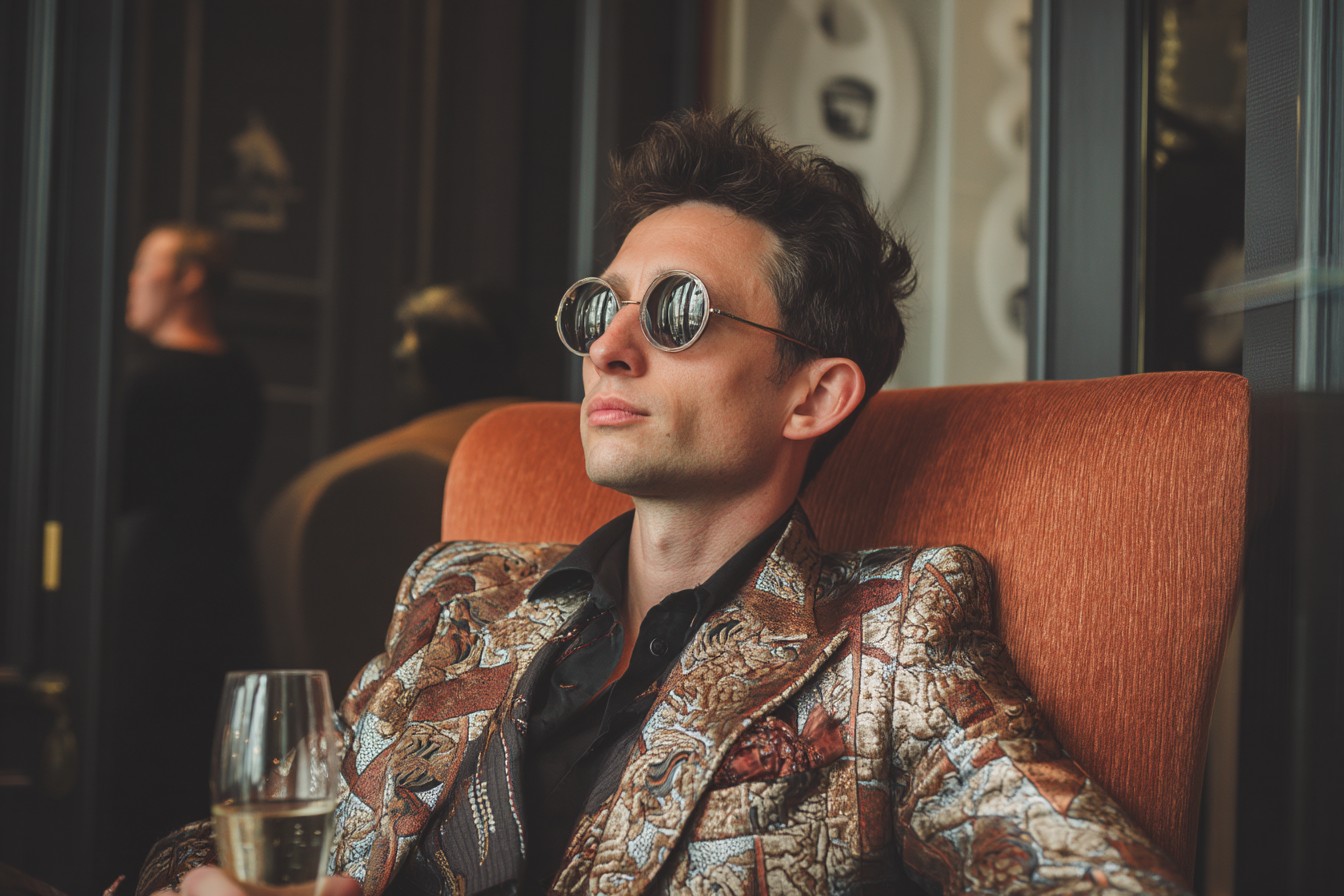
A pocket square is non-negotiable. Not those pre-folded monstrosities that come attached to a card, but a proper handkerchief arranged with what appears to be nonchalant elegance but actually took you fourteen attempts in front of the mirror. The TV fold (just the edge peeking out in a straight line) is fine for business but too staid for a wedding. Go for a puff fold or, if you’re feeling particularly rakish, a two-point fold. Just don’t match it exactly to your tie—that’s the sartorial equivalent of ordering chicken and chips at a Michelin-starred restaurant.
Speaking of ties, this is where you can have a bit of fun without looking like you’re auditioning for the circus. The current sweet spot is around 8cm wide—neither skinny nor 1980s power-broker wide. Textured fabrics like grenadine or knitted silk add interest without shouting about it. If it’s a spring/summer wedding, you might venture into lighter colors or subtle patterns. For autumn/winter, darker shades with texture work beautifully. I’m particularly fond of a burgundy grenadine tie I found in a tiny shop in Naples that’s become my wedding go-to. Three different grooms have now asked where it’s from, which I take as the highest compliment.
Shoes should be proper leather dress shoes—Oxfords ideally, though a sleek Derby can work too. Black is safest, but dark brown can be more versatile, especially with navy or lighter suits. They should be polished to a shine that suggests you make an effort but don’t spend your weekends in military boot camp. And for the love of all things holy, proper socks that match your trousers, not your shoes, and certainly not ankle-flashing trainer socks. Nothing ruins the line of a nice suit faster than a glimpse of bare ankle or white sports sock as you sit down.
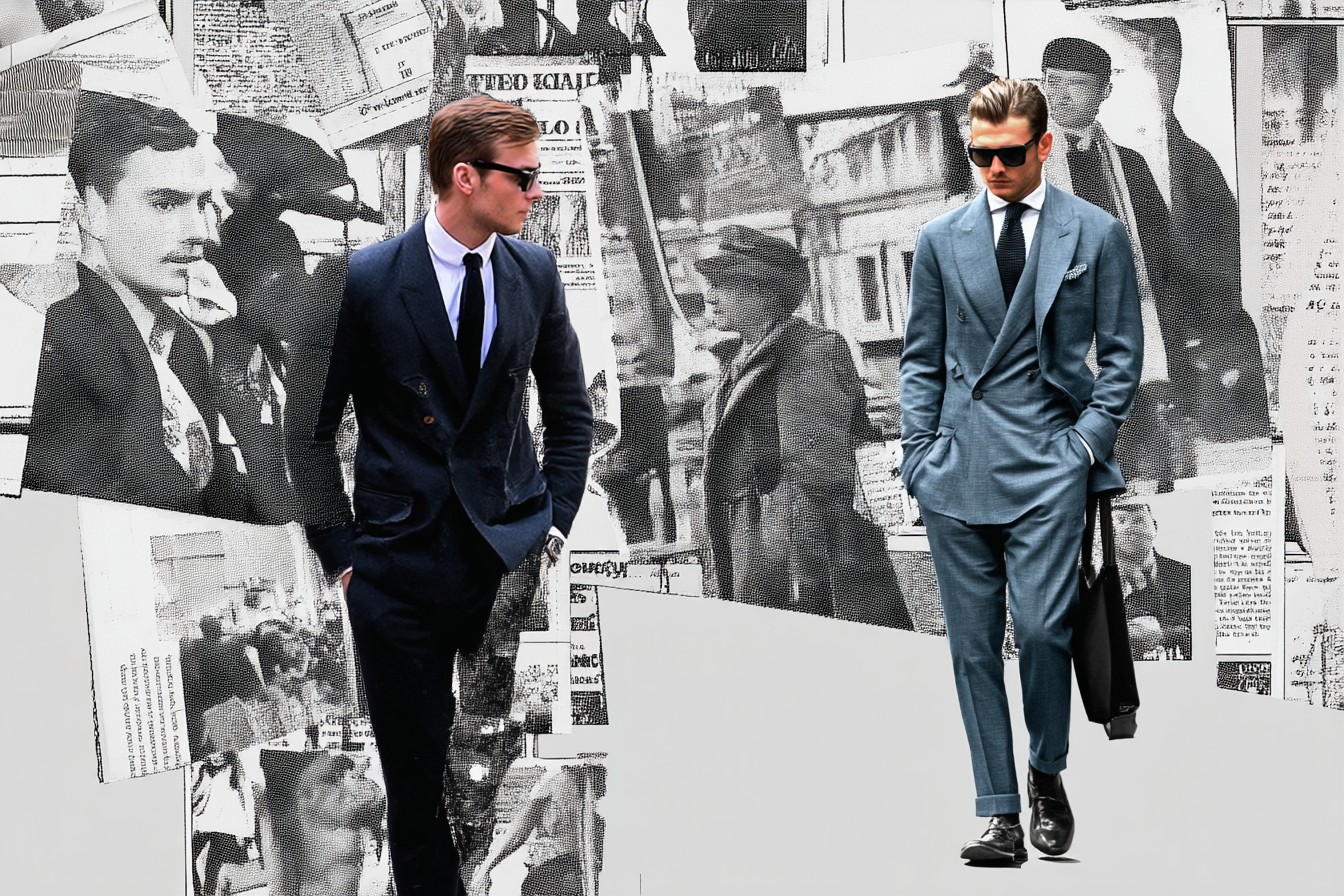
Shirt-wise, white is the classic, but pale blue or even a subtle stripe can work if the rest of your outfit is restrained. Proper double cuffs with cufflinks add an appropriate touch of occasion, though a well-ironed barrel cuff is perfectly acceptable too. Collar choice matters—a medium spread collar flatters most face shapes and works with most tie knots. Avoid anything too extreme in either direction unless you’ve got the face shape and confidence to pull it off.
Now, the seasonal variables. British weddings have the added complication of our glorious, unpredictable climate. For summer weddings, you might consider lightweight wools, cotton-linen blends, or even full linen if you’re brave enough to embrace the inevitable creasing (I’d advise against it unless the wedding is actually on a beach, which, let’s face it, it probably isn’t because this is Britain). Three-piece suits can be too warm for summer, but perfect for adding an extra layer of elegance to autumn/winter celebrations.
Winter weddings call for heavier fabrics—a nice worsted wool or perhaps even a flannel if you’re feeling textural. Consider a three-piece for warmth as much as style. A smart overcoat is essential (no puffas or parkas, no matter how cold it gets), and a scarf in a complementary color adds both warmth and interest.
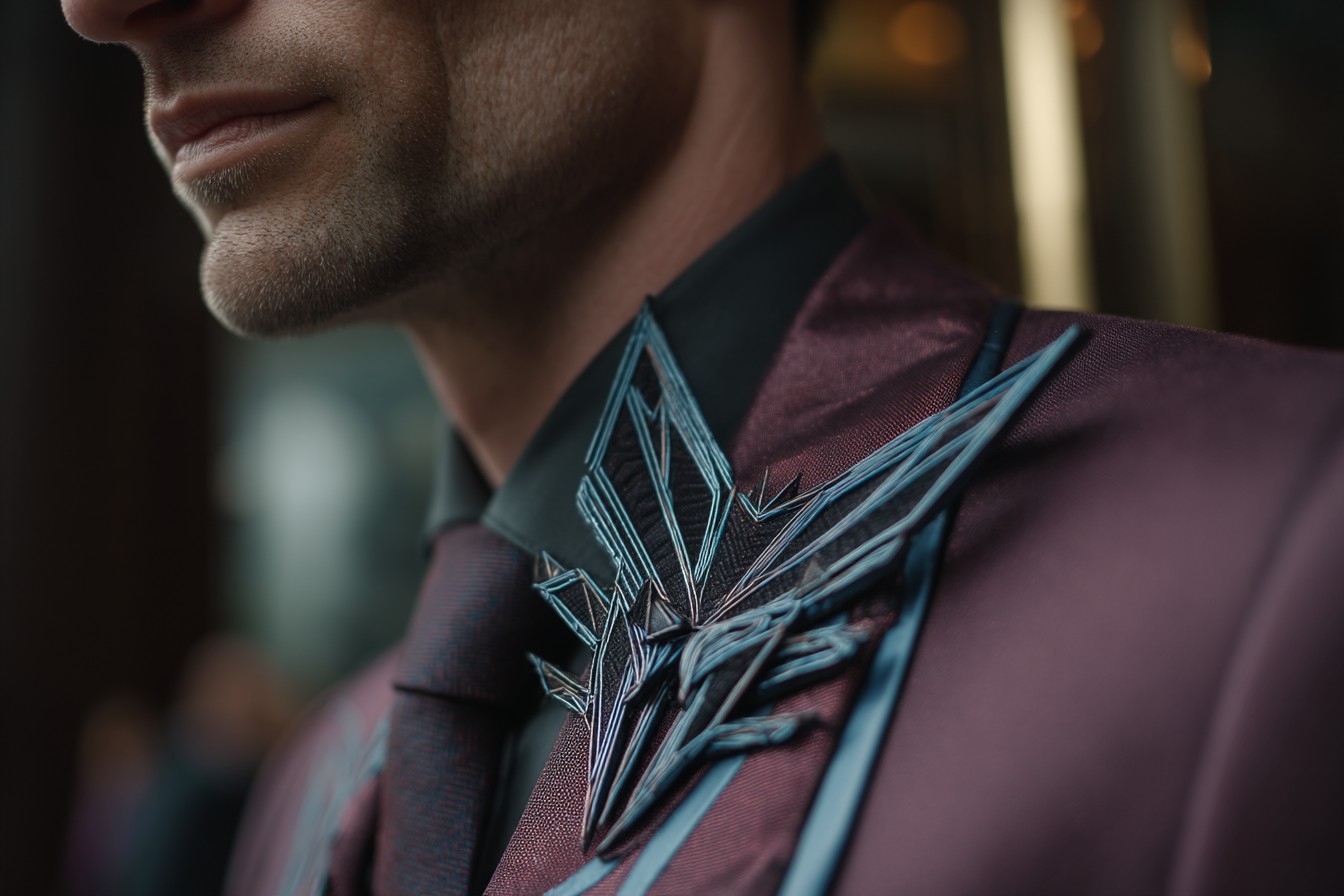
The British wedding season also brings the question of morning suits into play. If the invitation specifies “morning dress” rather than “lounge suit,” that’s a whole different ballgame—we’re talking tailcoats, striped trousers, the works. But that’s another article entirely, and one that would require me to stop pretending I know how to properly wear a top hat when I absolutely do not.
What about those invitations that specify “lounge suit” but then add qualifiers like “colorful” or “festive”? This is where the British talent for understatement comes into play. They don’t actually mean “dress like a children’s TV presenter”—they mean perhaps venture into a burgundy rather than navy, or consider a tie with a pattern that isn’t strictly regimental stripes. Maybe a colored pocket square with a bit more punch. Small, tasteful gestures toward joy rather than a full technicolor explosion.
There are regional variations too. London weddings tend to be more conservative in their interpretation of “lounge suit,” while I’ve been to Northern celebrations where it’s practically permission to break out the check three-piece and matching pocket watch. Scottish weddings bring the whole kilt question into play, which is a delightful option if you have genuine Scottish connections but veers dangerously into costume territory if your closest link to Scotland is enjoying Irn-Bru.
Here’s my hard-earned advice after attending roughly 37 weddings in the past decade: it’s always better to be slightly overdressed than underdressed. No one ever side-eyed a guest for looking too elegant, but turn up underdressed and you’ll be a talking point for years to come, and not in the good way. I still occasionally get reminded about the Linen Incident of 2014, usually by the same aunt who was scandalized by my choice of belt at Christmas dinner three years ago.
If you’re still unsure, there’s no shame in sending a discreet text to the couple or someone in the wedding party. A simple “Just checking what you mean by lounge suit for the big day” can save a world of embarrassment. Most people are delighted you care enough to ask.
And remember, no matter how perfectly you nail the dress code, never—and I cannot stress this enough—outshine the groom. It’s his day, not the debut of your new limited edition Edward Green brogues. I learned this the hard way when a groom friend didn’t speak to me for three months after I wore a particularly nice Anderson & Sheppard blazer to his countryside wedding. In my defense, he hadn’t specified “please dress slightly worse than me” on the invitation, but lesson learned nonetheless.
So there you have it. “Lounge suit” decoded: a proper suit, worn with proper accessories, striking that perfect British balance of caring enormously about how you look while pretending you haven’t given it a moment’s thought. Confusing? Absolutely. But then again, so is most of British culture. We like it that way. Keeps the tourists on their toes.
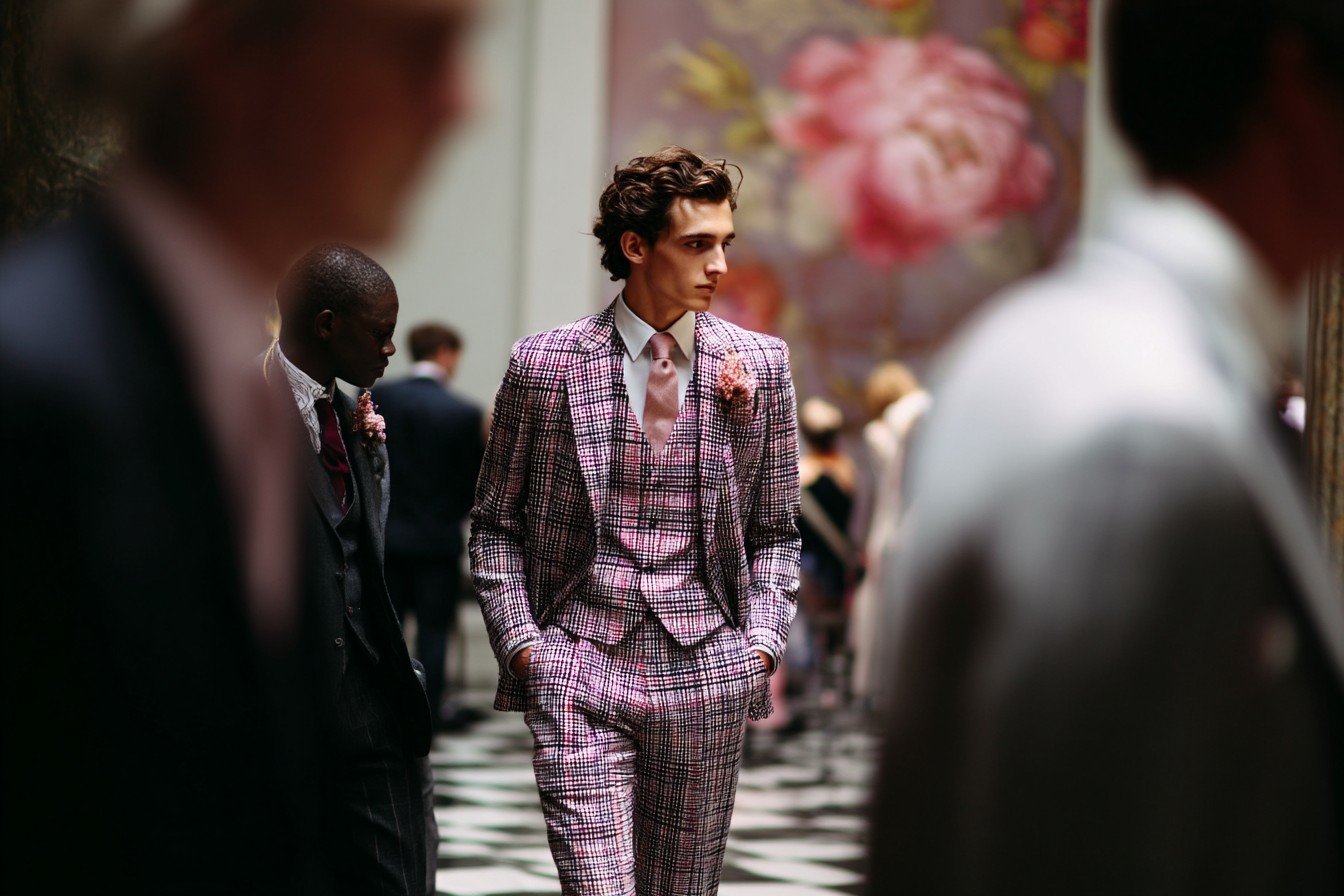
Leave a Reply